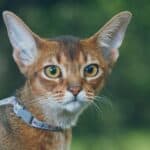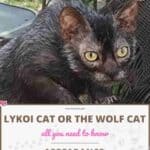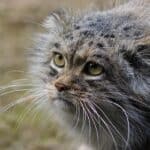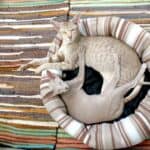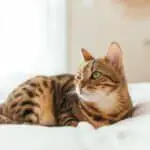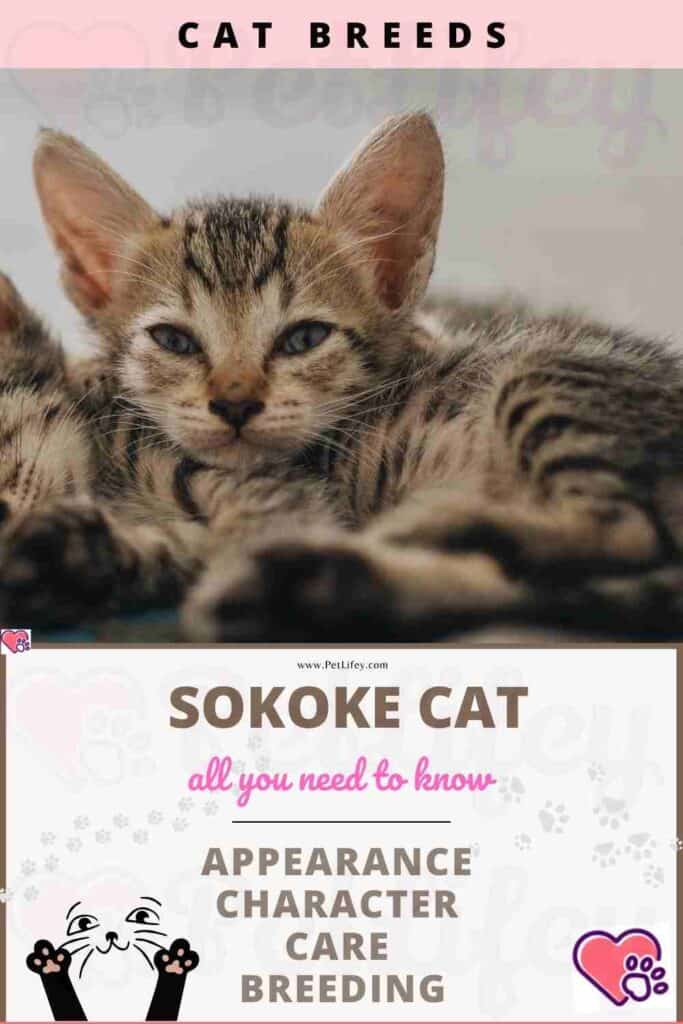
The Sokoke cat is the wild cat that lives in the forests of Kenya; unapproachable since always, it was “hunted” for years without result by the naturalists who wanted to study it.
Its preferred habitat are trees, on which it lives. It does not feed on small rodents or birds and their nests, as one would expect for any feline its size, but on butterflies, crickets, flies.
Insects are therefore its main source of food, which it assimilates by eating grass.
It is called Sokoke, although its native name is Khadzonzo, because the first specimens were captured, or rather found, in the Sokoke forest, which stretches for about 400 square kilometers between Kilifi and Malindi (and therefore not far from the coast and the ocean) and where many very special animal species live.
Note that this is a rare breed.
The origins of the Sokoke Cat

This very particular cat was bred and selected by Mrs. Jeni Slater, who, in the late seventies, found a cat that had given birth in the hollow of a tree, near her house, on the edge of the Sokoke forest.
The mother fled, but the lady was very struck by her elongated and slender appearance and by the design of her dress, very marked and perfectly identical in the mother and the young, which she took in and raised.
It was not until three years later, when she had a good number of subjects, that a researcher, commissioned by the government to carry out research on forest animals, saw the cats during a visit. at this lady and explained to her the exceptional nature of her discovery and therefore of her breeding.
Appearance of the Sokoke Cat
The size of the Sokoke cat is medium, with a very well developed musculature. The head is shaped like a truncated triangle, with conspicuous cheeks and accentuated cheekbones.
The chin is firm and in line with the tip of the nose; the profile is straight, without interruption on the chamfer. The ears are very large and carried high on the head, with a slightly rounded tip, open at the base and set apart.
The eyes are slightly almond shaped and are large, barely tilting upwards towards the outer edge of the base of the ear; their color varies from gold to amber via green.
The body, very muscular and of medium height, is quite tubular; the legs are long and thin, well muscled, the hind legs have a more accentuated angle than the front ones to give greater impetus; the feet are strong, oval in shape and the tail is long and slender; when the Sokoke is on the lookout, he wears it glued to the hind legs and only the point is turned upwards.
The fur, of medium length, is very silky to the touch, dense and soft; it is on the stomach that it is the longest and the most silky. The coat has markings that range from chocolate brown to black, while the base coat is a warm honey tone.
Coat color of the Sokoke Cat
The colors are the same for all Sokoke , as the design of the dress is always exactly the same.
The stripes are small and threadlike on the head and on the sides of the cheekbones where they form two arabesques; on the shoulders a very neat butterfly appears, from which three wide and parallel bands start, ending at the base of the tail.
The flanks wear a well-contrasted blotched tabby, while the belly is speckled with peas. The tail is ringed with ever darker stripes as we approach the very dark tip.
The Character of the Sokoke Cat
Although accustomed to domestic life, the Sokoke cat retains a keen “feline sense”; it is not totally dependent on humans and needs large spaces and trees to climb on to play and hunt.
Enterprising, agile and quick, its movements and attitudes are very reminiscent of those of the cheetah; its voice, which it uses to communicate with its master and its congeners, has a particular, intense tone, like its purring.
In short, it is a cat that allowed itself to be domesticated but which retains all its independence and a touch of savagery in its character.
Hug:
This cat, in frequent demand for attention, knows how to be cuddly at times.
Player:
Very fast and agile, the games essential to the good balance of this feline are expected to be intense.
Calm:
Curious by nature and very active, the African Shorthair seeks interaction rather than inaction.
Intelligent:
Lively and intelligent, its keen sense of curiosity may surprise you.
Fear / Suspicious of Strangers:
Although independent, its curiosity and intelligence make them perfectly able to adapt to contact with new people.
Independent:
Independent, the Sokoke does not suffer from loneliness if it has enough stimulation in its environment.
Behavior of the Sokoke Cat
Talkative:
Its voice, particularly intense, has a singular tone and rich in modulations.
Greedy / gluttonous:
It is a very active cat who has a good appetite. It will be essential to regulate its portions by using, for example, interactive bowls to feed it. It will find its account there: game and food combined!
Need for exercise:
Its slender morphology and long sturdy legs testify to its aptitudes for jumping, climbing, running and a pronounced need to spend one’s energy.
Runaway:
Explorer at heart, its curiosity can easily lead them to discover new areas and run away.
Compatibility of the Sokoke Cat with other animals
Sokoke and Dogs:
Active and playful, this feline is quite capable of cohabiting well with a dog if it has previously been well socialized with the species. However, provide high spaces where it can take refuge in case of need.
Sokoke and Other Cats:
The African Shorthair can learn to cohabit with another cat if you take the time to gradually introduce the two cats.
Sokoke and Children:
Active and curious, it is the ideal playmate for a child as long as he respects its limits and understands its body language.
Sokoke and the Elderly:
Sokoke is not the ideal cat for a calm person because it needs a lot of physical stimulation to spend its energy.
Price of the Sokoke Cat
On average, the purchase price of a Sokoké kitten in breeding is between 1800 USD and 2200 USD, the price often varying according to the line, the breeding, the age or even the sex. For the monthly budget, it will take an average of 50 USD / month to meet its needs, by offering them a quality diet and making sure to keep them in good health.
Maintenance of the Sokoke Cat
Grooming:
Its very short coat, devoid of undercoat, requires very little maintenance. Brushing and buffing the coat with a grooming glove once a week will be sufficient.
Hair Loss: Hair
loss is minimal, especially if the coat is groomed weekly.
Food for the Sokoke Cat
A quality diet adapted to their energy needs should be favored.
Health of the Sokoke Cat
Life
expectancy : The average life expectancy of this cat is 12 to 14 years , but some subjects can reach 20 years.
Resistant / Robust:
This cat is quite robust, however, despite its dense coat, the lack of undercoat gives it some sensitivity to low temperatures.
Tendency to
gain weight : Because this cat has a big appetite, it is necessary to ensure that its energy expenditure needs are met to avoid overweight.
Frequent illnesses:
As the breed is new and rare, the identification of pathologies specific to it is currently unknown. However, it can suffer from the same pathologies as those which affect the domestic cat, including oral pathologies.
Reproduction:
Only intra-racial marriage is allowed.
Good to know
Despite its exotic fawn appearance, DNA tests, carried out during scientific studies, revealed that the Sokoke shares genetic traits with cats from Lamu Island (off Kenya) and the Kenyan coast, not belonging to a wild species.
The Sokoke is a rare breed that has developed naturally without human intervention.


